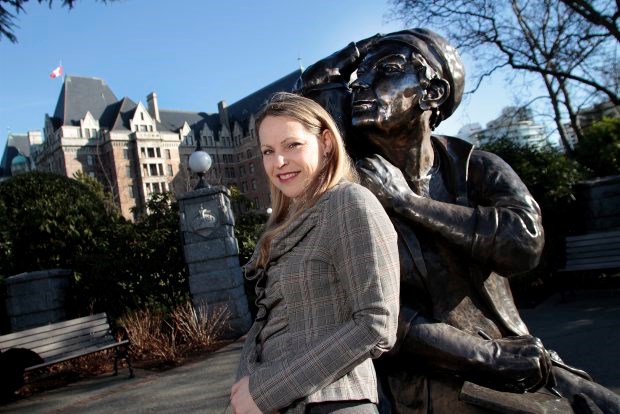It's more than just stating the obvious to note that Bone Wind Fire might be the most artful film you'll see at the festival.
True, Jill Sharpe's latest film is a portrait of three iconic artists 聴 Emily Carr, Georgia O'Keeffe and Frida Kahlo.
But the Vancouver filmmaker's new half-hour documentary also happens to be a work of art in itself. It is a lovely, impressionistic tapestry that uses the artists' own words in their beloved landscapes to articulate their creative process. It strives to illustrate both the similarities and differences of these women, defined in large part by their gender and nationality.
The film, paired with Richard Boyce's Rainforest in tonight's In Our Backyards showcase (Empire Capitol 6, 9:45), is an astonishingly compact meditation for a project that's been seven years in the making, if you tally up Sharpe's full investment.
The result is a fluid, stylized film that journeys not just into the hearts, minds and eyes of the artists whose comments are effectively interwoven, but to visually striking locations as well. They include a rainforest in Alaska where Sharpe found pristine totem poles, to Kahlo's house in Mexico and to the desert of New Mexico, where O'Keeffe's studio was re-created.
Bone Wind Fire is both poetic and playful, as when a mirror morphs into a painting, Carr's face is reflected in a birdbath or coconuts play ascend from a pool of water.
Clever visual effects and animation combine to pull paintings into Sharpe's triptych, which was inspired by a Vancouver Art Gallery exhibition and Sharyn Rohlfsen Udall's book Places of Their Own.
"I like a space to think 聴 if you can call what I do thinking," says O'Keeffe, voiced by Rebecca Jenkins for the film.
Carr, who shared O'Keeffe's passion for nature said: "The old way of seeing is inadequate to express this big country of ours."
Reflecting on the bus crash that severely maimed and almost killed her, Kahlo recalls: "I drank because I wanted to drown my sorrows, but now the damned things have learned to swim, and now decency and good behaviour weary me."
These memorable lines and more were culled from 6,000 pages of letters and journal entries Sharpe sifted through before writing a script that was originally meant to be a 90-minute documentary.
"It was a delicate process because I needed to meet with their estates and win their trust," she recalled.
"I started writing and going through these journals for years, never knowing if we'd ever get permission to also show the paintings."
There were so many stops and starts, waiting for approvals, financing and a green-light for the script from the National Film Board, the award-winning filmmaker managed to complete three other films in the interim. She wrapped Weird Sex and Snowshoes: A Trek Through the Cinematic Psyche, Girls Don't Fight and Corporations in the Classroom.
"I knew that how I wanted to make the film was to integrate these paintings into the landscape," Sharpe recalled.
"Of course, paintings need to be seen in person, so my concern was about how I could bring them to life."
She had to get clearance from estates and rights holders of photos and paintings to manipulate the visual layers. To her amazement, she even received permission to show Alfred Stieglitz's portrait of O'Keeffe on other than a white background.
"The [Udall] book was key because it showed me the three estates had all agreed to put the artists in one place together," she said. "Usually when you're dealing with icons like that, most estate holders want their artists to stand alone."
She admits she was blown away when permission was granted to crop a photo that unites all three artists.
"Those were huge concessions," Sharpe said.
"Once they saw that I was trying to evoke the spirit of the artists and their work, I think they realized they'd see this beautiful transition rather than just showing them in a simplistic way."
Being a painter herself was beneficial, since Bone Wind Fire is different from any other films she's made, she said.
"It gave me a language to start talking to my director of photography more eloquently about where I wanted to push and pull light and composition," she said, referring to Sylvaine Dufaux, who has worked with Darren Aronofsky and Francois Girard.
"The film is trying to evoke what a painter sees."
If Sharpe had to name another film that inspired her, she said it would be Girard's Thirty Two Short Films About Glenn Gould.
"Those little films captured more of the spirit of the man than you could in any biopic," she said.
Sharpe will be in attendance for a Q&A following tonight's screening.



